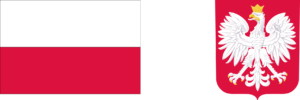Industry in the European Union is collectively responsible for approximately 22 per cent of total carbon dioxide emissions into the atmosphere, which, according to widely accepted scientific consensus, contributes significantly to the progress of global warming [1]. In order to reduce carbon emissions, the community authorities have decided to take a number of measures aimed at making European industry less harmful to nature. One of the key solutions in this regard is the EU’s CO2 emissions trading scheme – referred to as the EU ETS for short [2]. This solution was established in 2005 and was designed to promote cost-effective reductions in greenhouse gas emissions and to stimulate economic efficiency. The EU ETS is designed to regulate the amount of greenhouse gases that can be emitted by certain industries, energy producers and airlines [3]. As part of a package of measures, the European Union sets an overall cap on emission allowances and companies receive or purchase these allowances for a set price. This cap is gradually lowered to reduce the amount of gases emitted. This means that, over time, the number of emission allowances available decreases, with the aim of stimulating companies to invest in lower-carbon technologies to meet the requirements of the scheme. The introduction of the EU ETS was intended to encourage companies to take climate-friendly action to reduce greenhouse gas emissions by introducing an economic instrument – emissions trading. The scheme allows flexibility in meeting emission reduction targets by allowing companies to buy and sell allowances as they see fit. The scheme in question has its roots in the Kyoto Protocol, a document agreed in 1997 under the United Nations Framework Convention on Climate Change (UNFCCC) [4]. The Protocol set targets for reducing greenhouse gas emissions, including carbon dioxide, to combat climate change. In response to the Protocol’s commitments, the European Union developed the EU Emissions Trading Scheme as an instrument to implement them. As mentioned, the EU ETS was already launched in 2005. It was the first greenhouse gas emissions trading scheme in the world [5]. The objective of the EU ETS is primarily to reduce greenhouse gas emissions from economic sectors such as industry, energy production and air transport by setting emission limits. The limitation of the maximum number of available allowances is ultimately intended to encourage businesses to take reduction measures and promote investment in low-carbon technologies in order to achieve the climate goals set out in the aforementioned document and subsequent climate agreements.
Programme phases
The system was not implemented immediately. The procedure for its incorporation into the structures of Community law was complicated and lengthy, not least because of protests from the less wealthy Member States, which saw the introduction of the system as an attack on their energy sovereignty. The first phase of EU ETS implementation progressed between 2005 and 2007 [6]. This time was only the pilot phase of the programme, which was primarily aimed at preparing the market for the arrival of the new regulations and closely examining the price formation of products from the industries covered by the scheme. The next phase was from 2008 to 2012. During the second phase, the most significant moment was on 12 December 2008 – this was when the EU countries adopted the Energy and Climate Package, assuming, inter alia, that energy-intensive industry companies would have to purchase CO2 emission allowances on the exchange. At the end of this phase, the scope of the scheme was also extended to include aviation. From 2012 to 2020, the third phase lasted, during which trading in CO2 emission allowances under EUAs was based on the ICE exchange in London and the EEX exchange in Leipzig. At that time, the Community mainly pursued measures leading to a gradual harmonisation of Member States’ national laws towards the scheme [6].
In recent years, as a result of the economic crisis caused by, among other things, the COVID-19 pandemic and Russia’s aggression against Ukraine, a reduction in greenhouse gas emissions has been observed, resulting in reduced demand for EU ETS allowances. As a result of this, and other factors, carbon prices began to gradually fall and the EU ETS accumulated a significant surplus of allowances [7]. This surplus created the risk that the mechanism created by the EU may not be able to effectively incentivise companies to take cost-effective mitigation actions that would stimulate innovation in low-carbon technologies. De facto, the fall in the carbon price may have reduced the incentive for companies to invest in new low-carbon equipment and to take action to reduce CO2 generation. This was such a significant problem for the functioning of the EU ETS that the European Union has recently taken steps to address the situation. One attempt was to introduce reforms aimed at making the system more efficient by ensuring a stable market situation. The changes in question included the introduction of the previously mentioned instrument to regulate the surplus of allowances by gradually reducing their availability and the introduction of an adjustment mechanism to properly and environmentally manage the surplus of allowances. The aim of the measures cited was to rebalance the allowance trading market and to encourage companies to make efforts to reduce greenhouse gas emissions. In this way, the authorities of the European community sought to restore confidence in the ETS and to stimulate investment and innovation in low-carbon technologies. The fourth phase of the scheme’s implementation is now underway and began on 14 July 2021, when the European Commission adopted the Fit for 55 package – a set of legislative proposals aimed at adapting the community’s policies in the fields of climate, energy, land use, transport and taxation so as to achieve a net reduction in greenhouse gas emissions of at least 55 per cent by 2030 – compared to 1990 levels [6].
System in Polish law
In the Polish legal order, the Act of 12 June 2015 on the greenhouse gas emission trading scheme is of fundamental importance in the issue at hand. This Act serves to apply a number of EU normative acts, including but not limited to:
- Commission Regulation (EC) No 748/2009
- Commission Regulation (EU) No 1031/2010
- Commission Regulation (EU) No 550/2011
- Commission Implementing Regulation (EU) 2018/2067
- Commission Regulation (EU) No 389/2013
- Commission Regulation (EU) No 1123/2013
- Regulation (EU) 2017/2392 of the European Parliament and of the Council
- Commission Delegated Regulation (EU) 2019/331
- Regulation (EU) 2018/842 of the European Parliament and of the Council.
In addition, the law under discussion implements:
- Directive 2003/87/EC of the European Parliament and of the Council of 13 October 2003 establishing a scheme for greenhouse gas emission allowance trading within the Union and amending Council Directive 96/61/EC;
- Directive 2010/75/EU of the European Parliament and of the Council of 24 November 2010 on industrial emissions (integrated pollution prevention and control);
- Directive (EU) 2015/2193 of the European Parliament and of the Council of 25 November 2015 on the limitation of emissions of certain pollutants into the air from medium-sized combustion plants;
- Directive (EU) 2016/2284 of the European Parliament and of the Council of 14 December 2016 on the reduction of national emissions of certain atmospheric pollutants, amending Directive 2003/35/EC and repealing Directive 2001/81/EC;
- Directive (EU) 2018/410 of the European Parliament and of the Council of 14 March 2018 amending Directive 2003/87/EC to strengthen cost-effective emission reductions and low-carbon investments and Decision (EU) 2015/1814 [8].
The material scope of the act in question is set out in Art. 1, which provides that this Act sets out the rules for the operation of the greenhouse gas emission allowance trading scheme, and thus makes the implementation of EU proposals into Polish legislation. The legislator chose to emphasise that the presented scheme for greenhouse gas emission allowance trading covers emissions from installations and aviation operations only.
Greenhouse gas emissions from the installation relate only to the following chemicals:
– carbon dioxide (CO2);
– nitrous oxide (N2O);
– perfluorocarbons (PFCs).
The above-mentioned catalogue is limited in the case of gas emissions from aviation operations, since, as a result of the disposition of Article 1(4) of the law in question, greenhouse gas emissions from aviation operations relate only to carbon dioxide (CO2 [8]).
It is worth bearing in mind that the legislator has enumerated the types of greenhouse gas emissions that are not regulated by the provisions in question. This catalogue can be found in Article 2 and enumerates that the provisions of the Act do not apply to greenhouse gas emissions from an installation or part thereof used for research, development or testing of new products and technological processes and an installation using exclusively biomass, an installation for the combustion of hazardous waste or municipal waste, as well as from certain aviation operations [8].
The controversy surrounding the operation of the EU ETS is a frequent element of public debate, especially in these times when electricity prices have risen dramatically as a result of the energy crisis. The emissions trading mechanism is often criticised because of its impact on the cost of power generation. Moreover, the regulation in question is about to be supported by the CBAM scheme. According to experts, the aim of the CBAM mechanism, the European Commission’s flagship regulation related to the ‘Fit for 55’ initiative, is to minimise the risk of ‘carbon leakage’ outside the EU due to imports into the Union of products manufactured in carbon-intensive industries. Under the terms of the Mechanism, the importation into the EU of certain carbon-intensive goods covered by the CBAM will incur an additional cost, depending primarily on the emissions ’embedded’ in the imported goods. This cost is to be borne and accounted for by importers based on a system of dedicated CBAM Certificates, the price of which will be closely linked to the price of ETS certificates. The import of CBAM-covered goods will also be accompanied by additional obligations and formalities. It is proposed that CBAM would initially cover imports of iron and steel, cement, fertilisers, aluminium, electricity – as well as hydrogen, certain precursors and processed products. Importantly, the regulation would apply not only to direct emissions ’embedded’ in imported products, but also, ‘in strictly defined cases’, to indirect emissions. According to the European Commission’s announcements, the formal adoption of the Regulation and the implementation of the transitional period foreseen therein is still planned for 2023 [9].
The mechanism under discussion is an important element shaping the modern energy market. The coming decades, in connection with the implementation of the Fit for 55 package, may prove to be groundbreaking for electricity producers and consumers. The lack of price stability in energy markets is a multifaceted problem, influenced not only by high inflation or fuel demand, but also – to a relatively high degree – by the European Union’s climate policy. Issues relating to the imposition of monetary burdens on carbon-intensive sectors of the economy will certainly continue to be an area of contention between leading political forces in Europe for many years to come.
REFERENCES:
[1]https://www.o2.pl/informacje/ile-swiatowej-emisji-co2-pochodzi-z-europy-6786812563704352a .
[2]https://www.forum-energii.eu/pl/blog/ets-reforma .
[3] https://climate.ec.europa.eu/eu-action/eu-emissions-trading-system-eu-ets_pl .
[4] https://europapnews.pap.pl/unijny-system-handlu-uprawnieniami-do-emisji-w-pigulce .
[5] https://pl.wikipedia.org/wiki/Europejski_System_Handlu_Emisjami .
[6] https://europapnews.pap.pl/unijny-system-handlu-uprawnieniami-do-emisji-w-pigulce .
[7] https://swiatoze.pl/ceny-uprawnien-do-emisji-co2-spadly-w-lipcu-do-76-euro/ .
[8] Act of 12 June 2015 on the greenhouse gas emission trading scheme (i.e. Journal of Laws 2023, item 589).
SOURCES:
– legal acts: Act of 12 June 2015 on the greenhouse gas emissions trading scheme (i.e. Journal of Laws 2023, item 589).







